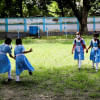Make subordinate courts accessible for women

Improving the efficiency and quality of the basic service facilities available in the courts—in particular for women users—is a key element of improving the justice delivery system. Adequate and effective infrastructures include basic systems and services required for an institution's smooth operation at various levels. As research from BRAC reveals, the availability of basic facilities can be quite low in the 192 subordinate courts of Bangladesh, which includes the Divisional and Sessions Judge Court, the Chief Judicial Magistrate Court, and Nari O Shishu Nirjaton Daman Tribunal.
According to a BRAC study, among the 192 courts in 64 districts, only 24 percent have separate female washrooms. On the other hand, 67 percent courts out of the total have designated lactating mothers' corners for female justice-seekers. Merely 12 percent of courts have a separate waiting room for females, and only 13 percent have ramps for persons with disabilities. Additionally, a mere 42 percent of courts provide safe drinking water facilities, while 38 percent have snack corners.
Among the essential facilities mandated by the Bangladesh Labour Act, 2006, and the Bangladesh Building Code, 2021, lactating mothers' corner and separate female washrooms are crucial. However, even within this low rate of availability, it was observed that women cannot utilise the separate washrooms and breastfeeding corners constructed for various reasons. Some available washrooms are rendered unusable due to their use as common toilets, fees required for access, toilets being kept locked, lack of signposting, or restrictions imposed by court staff. Additionally, one out of three lactating mothers' corners remains locked, abandoned, unknown to users, repurposed as a smoking zone, or situated far from the courthouse.
In difficult to access places like char, haor, mountainous, and coastal areas in Bangladesh, only 24 percent have separate functional female washrooms, while 41 percent have functional lactating mothers' corners. The study reveals that although the percentage of separate functional washrooms is similar in the hard-to-reach areas, the percentage of functional lactating mothers' corners is lower than in plain land districts.
On the other hand, even though the Nari O Shishu Nirjaton Daman Tribunal is exclusively for women and children, only 80 percent of the total Nari O Shishu Nirjaton Daman Tribunals have availability of separate washrooms and lactating mothers' corners.
The aforementioned findings suggest that the issue is not solely a supply-side constraint; it also reflects a lack of interest from authorities. Particularly in hard-to-reach districts, the interest seems notably diminished. For instance, Laxmipur, Rajbari, and Sunamganj lack any lactating mothers' corner or separate washroom in their courts, with two of these districts falling under the hard-to-reach category (Laxmipur and Sunamganj). The inaccessibility of a significant percentage of infrastructure for women also stems from inadequate monitoring and the absence of designated staff essential for the courts' smooth operation.
These situations are not unknown to the authorities. In October 2019, the Honourable High Court issued a rule questioning the failure to implement the Act regarding establishing lactating mothers' corners at the court premises. Similarly, in April 2023, the Court ordered the authority to enforce this Act and asked why the Ministry of Women and Children Affairs had not been directed to formulate the guideline.
It is ironic that such conditions persist in subordinate courts where numerous women and children visit daily to seek justice. Among these women are justice-seekers, lawyers, court staff, and professionals. Yet, the confidence of these women is undermined when confronted with such abysmal infrastructure.
A budget of Tk 35 crore has already been allocated in FY2023-24 for setting up "Nyaykunja"—restrooms for both men and women with all necessary facilities—in the premises of each court across the country. However, this small budget is not adequate enough to ensure women-centric basic facilities in all courts.
When it comes to these basic facilities in courts, several existing and interrelated issues and action areas within court premises have been identified. Allocation of higher budget for establishment and maintenance of separate washrooms, lactating mothers' corner and separate waiting room for women and children are certainly desperately needed. Establishing separate waiting rooms and lactating mothers' corner far from court houses will not be a desirable kind of change. Toilets should be close by for litigants while they wait for their hearing. The number of these toilets should be proportionate to the court needs.
Another recommendation is improving the reception area in the courthouses, in particular for persons with reduced mobility. The access to information by court users through infographics must be encouraged. It is essential that reception staff are physically present to answer any questions from court users who may often feel intimidated, and in this way exert a calming influence.
Another issue that should be brought up is that relying solely on long-term strategies for women and child-friendly court premises may take time. Instead, immediate actions should be taken to turn non-functional facilities into functional ones. Allocating budgetary and human resources for the upkeep and maintenance of these facilities can also be an effective solution.
Nawshiba Arnob and Abu Said Md Juel Miah are development researchers, currently working in BRAC Advocacy for Social Change.

 For all latest news, follow The Daily Star's Google News channel.
For all latest news, follow The Daily Star's Google News channel. 





Comments